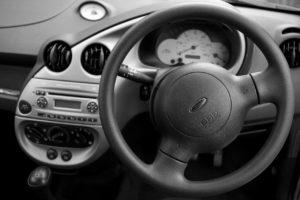With the ever-rising cost of petrol and diesel, making sure you get the most miles for your money and the maximum fuel efficiency has never been so important. So alongside finding the best-priced fuel in your area, the following tips will help you go further.
1. Optimum pressure in your tyres – Up to 3%

If your tyres are under-inflated it increases your vehicle’s drag, this, in turn, means you will decrease your MPG (miles Per Gallon). Check your tyres regularly to ensure you have optimum pressure, especially before a long journey.
2. Remove your roof rack – Up to 2%
Your roof rack, even when empty will interfere with your car’s aerodynamics, causing more wind resistance and drag. This in turn will mean your engine will have to work harder and be less efficient. So if you’re not using it and don’t need it, remove it, it will save you money!
3. Close windows at higher speeds – Up to 4%
When you’re travelling around at 40mph or less it is advisable to drive (if required) with your windows down and your air conditioning off. At low speeds, there is less aerodynamic drag making it more cost-effective than having your windows up and air conditioning on. This drag is exponential so at 70pmh the drag is 4 times more than at 35mph, making this speed more efficient to have the windows up and air conditioning on (air conditioning covered in next chapter).
4. Air conditioning turned off at low speeds – Up to 8%

When you’re driving on roads at 40pmh or less, it is advisable to have your air conditioning off and your windows down. At low speeds your vehicle’s engine isn’t working particularly hard and switching the air conditioning on will increase the load on the engine, thus decreasing its fuel efficiency. At higher speeds, your car’s engine is already working hard enough to generate enough power for your air conditioning and accessories without any additional power being needed to be produced.
5. Declutter your car – Up to 2%
Removing any items from your car that may not be required such as unrequired items for your boot or cabin, will make your vehicle lighter. A lighter car requires less effort to accelerate and thus saves you fuel.
6. Don’t fill your tank – Up to 1%
When you fill your tank to its capacity, you’re also filling up a large space with extra weight. By filling your vehicle’s tank with fuel to only 1/2 or 3/4 full, you’re saving on the weight you will be carrying around, making it more fuel-efficient.
7. Drive more efficiently
a. Gradual acceleration
Rather than accelerating hard with a high fuel flow rate to get your car up to speed, accelerating gradually with low revs and less power can save fuel.
b. Use correct gears
Always drive in the most fuel-efficient gear for the speed you are driving. Keeping your vehicle at its optimum revs will increase fuel efficiency and make for a smoother ride.
c. Drive to traffic conditions
By taking your foot off the accelerator, reading the road ahead and letting your car slow down under its own momentum, your car is using less fuel.
8. Filling up at night?
You may have heard this and thought it might be an urban myth, but if you fill up when it’s cold you do get slightly more fuel for your money, we’re only talking pennies though.
9. Using optimum fuel?
In general, for the extra cost of the premium fuels such as Shell Optimax over their standard fuel, it’s not worth using it on a regular basis. But to keep your cars engines fuel efficiency at its optimum, using (according to the AA) 3 tanks full of optimum fuel in a row and then going back to standard fuel will help keep the engine efficient.